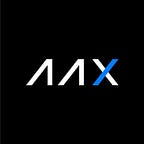Ethereum upgrades overview: What is Serenity, Eth 2.0? — AAX Academy
As a quick primer on Ethereum: it’s an application of blockchain technology that aims to take its use case beyond payments. Ethereum is a general-purpose blockchain that’s open-source, public and has its own native cryptocurrency ETH.
The decentralized platforms also has its own programming language called Solidity that programmers can use to create Smart Contracts. These are constructions of code that self-execute when certain conditions are met, paving the way for decentralized apps (dApps) which build on the inherent features of blockchain such as transparency, trustworthiness and immutability.
Ethereum has been revolutionary from Day One, and during the ICO craze of 2017 it helped expand the crypto ecosystem with entrepreneurs and developers working together to launch the newest, most innovative applications of blockchain technology. But it hasn’t been smooth sailing all the way.
The network faces a number of systemic issues around scalability, security and the cost of transactions. That is why the decentralized community that carries Ethereum embarked on a development roadmap to take care of these issues through a series of carefully planned upgrades across four different stages.
We are now entering the Serenity stage, the final stretch of a rigorous development plan. Before we get into Serenity, let’s take a quick look at some of the upgrades implemented over the last few years.
The Ethereum development phases
Each stage in the Ethereum development plan introduced more features and fixes to existing problems. Some steps included hard forks that changed functionality in a way that was not backward compatible.
March 2016 — Homestead (block 1,150,000)
Removed Canary Contracts which previously gave Ethereum core developers the ability to stop network activities. New codes for Solidity and introduced the Mist ETH wallet.
July 2016 — DAO Hard Fork
This was an unplanned fork in response to the DAO Attack when $50 million worth of ETH stolen due to a vulnerability in the contract for the Decentralized Autonomous Organization. It caused a split in the network and the creation of the Ethereum and Ethereum Classic chains.
October 2017 — Byzantium (block 4,370,000)
Reduced block rewards from 5 ETH to 3 ETH.
February 2019 — Constantinople
Improved state channels which provide better support for off-chain transactions. Block rewards were further reduced down to 2 ETH. Smart contracts were allowed to verify each other using just the hash of another contract. This hard fork also included other changes that fixed security issues codenamed Petersburg.
October 2019 — Istanbul
The next hard fork for Ethereum and the final upgrade before implementing it included more security fixes and incentives to move away from the Proof of Work to Proof of Stake algorithm.
Now, we arrive to the final stretch, Eth 2.0 — Serenity.
What’s in store during Eth 2.0 Serenity
Eth 2.0 is the name for the stage that includes all updates from Serenity. The launch for Eth 2.0 was first scheduled for January 2020, but that has since been pushed back and developers are now eyeing late July 2020 with “95% confidence”.
The aim here is to make Ethereum more scalable, faster, and reliable. According to researcher Danny Ryan the main goals under Serenity are:
- Security: increase participation of validators in total and per unit time.
- Simplicity: minimize complexity even at the expense of some efficiency gains.
- Longevity: preparing the network for a future where quantum computing is available.
- Resilience: even when lots of nodes go offline, the network should still be live.
- Decentralization: open up the participation of more typical consumer laptops in the validation processes to preserve the decentralization of the network, considering he current dominance of ASIC validators.
The Serenity stage is broken down further into four phases, each with their own sub-goals and updates.
Phase 0: Beacon Chain
Postponed many times, with the Beacon Chain we finally arrive at the switch to a Proof of Stake consensus algorithm. Initially, this new chain will run in parallel to the main Proof of Work Ethereum blockchain in a simplified way — not supporting smart contracts or accounts. During this stage, a new asset will be created called ETH 2 which is used to reward transaction validators on the Beacon Chain. At first, ETH2 can not be withdrawn from the Beacon Chain.
Phase 1: Shard Chains
Sharding is a scalability technique that allows parallel transactions. This is intended to help transactions scale by dividing the network across multiple shards, allowing the network to process many transactions concurrently. This technique can also lead to higher centralization, as each shard can be validated by a small group of validators.
Phase 2: eWASM
Smart contracts need the Ethereum Virtual Machine (EVM) to self-execute transactions. The EVM is like a global decentralized computer containing millions of executable objects, each with its own permanent data store. The current EVM processes transactions sequentially but with the Proof of Stake and sharding changes, the EVM needs to be updated to support smart contracts, accounts and states with the new features on the new blockchain.
The upgraded EVM is called eWASM, which stands for Ethereum WebAssembly, a reference to the open standard defining a portable binary code format for executable programs.
Phase 3: Continued Improvement
The last phase is open-ended at the moment, as it will encompass all future changes and fixes that will be needed in response to the previous stages. As with every software, there’s no final version — there are always improvements and fixes that need to be done.
Trade with AAX
AAX is the world’s first digital asset exchange to be powered by LSEG Technology. Offering OTC, spot, and futures, it provides a highly secure, deeply liquid and ultra-low latency trading environment; and a meeting point between crypto and global finance.
Open an account with AAX, or download the app, and experience the next generation crypto exchange.
Originally published at https://academy.aax.com on June 4, 2020.
